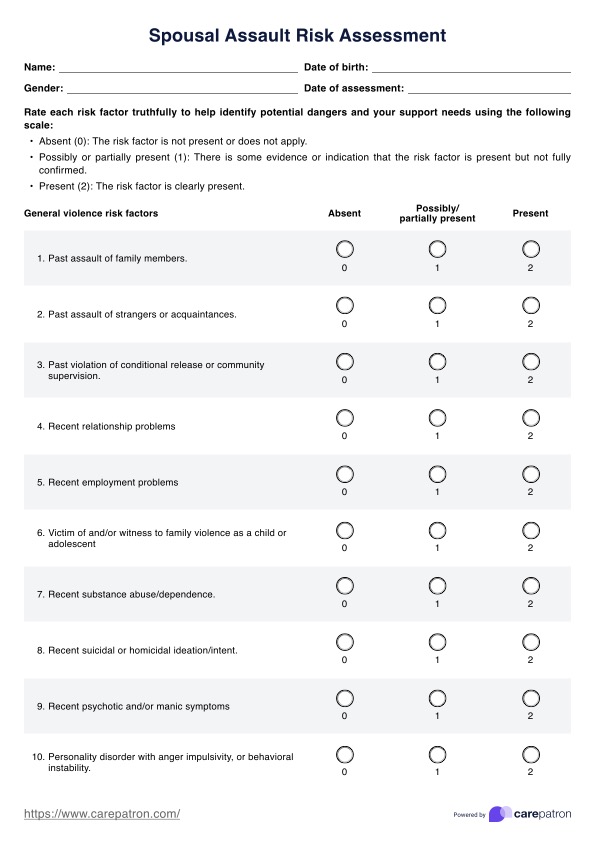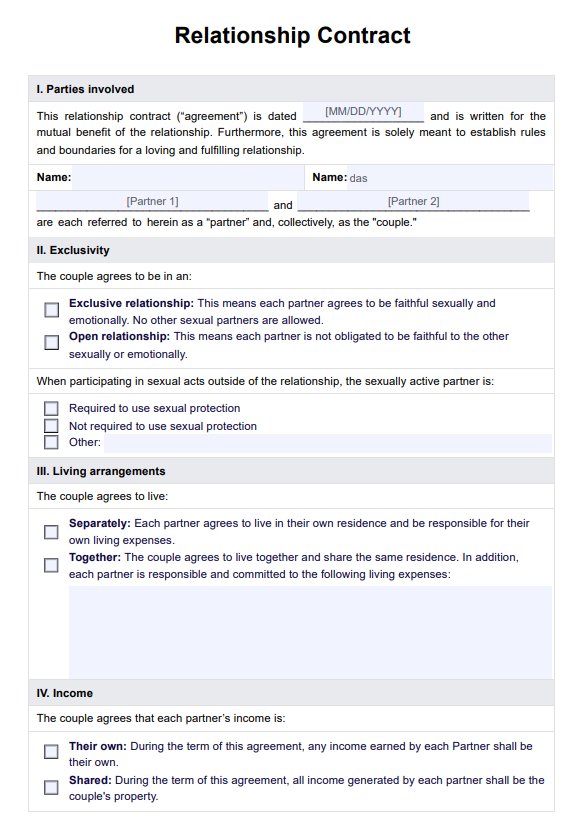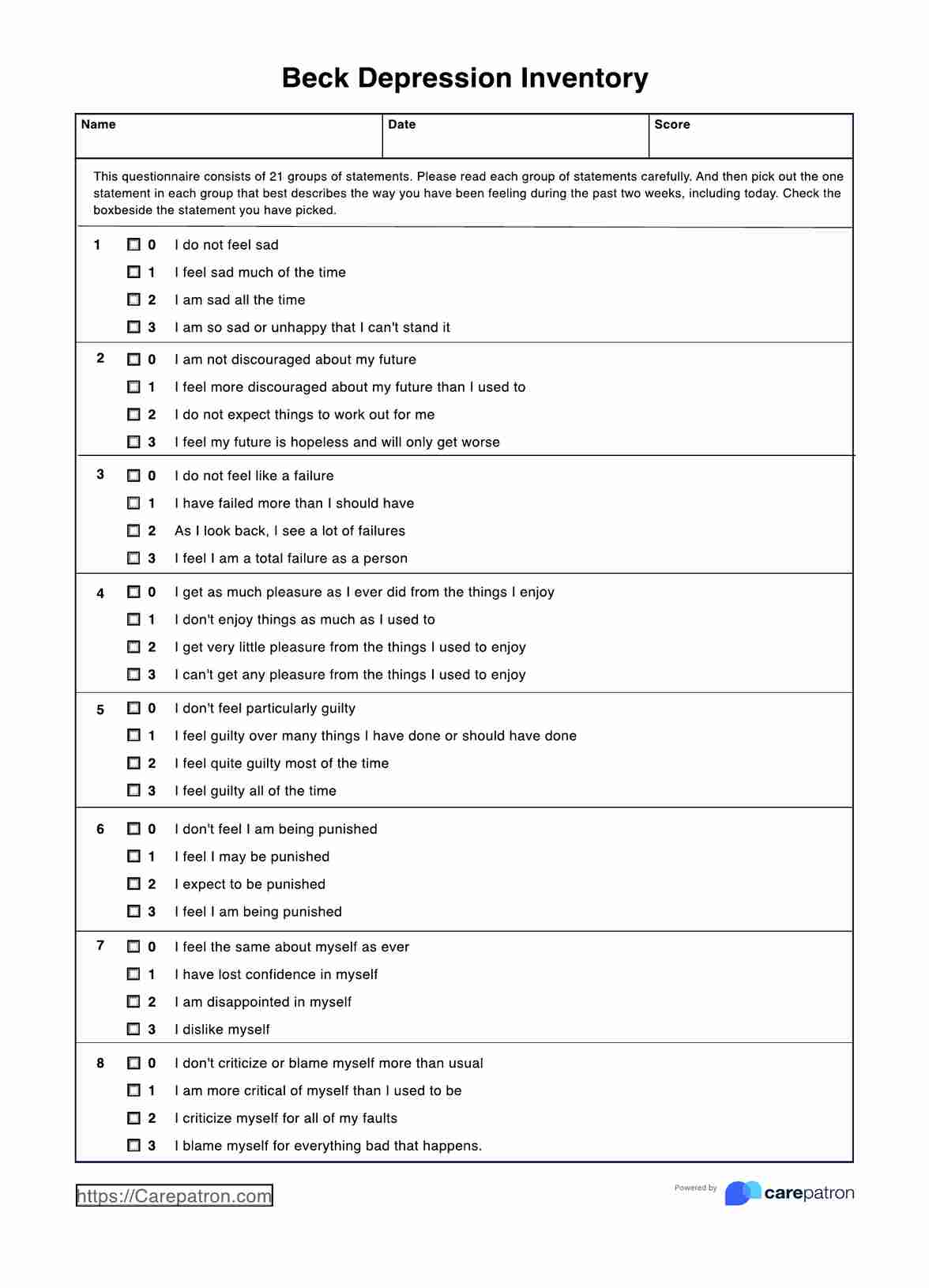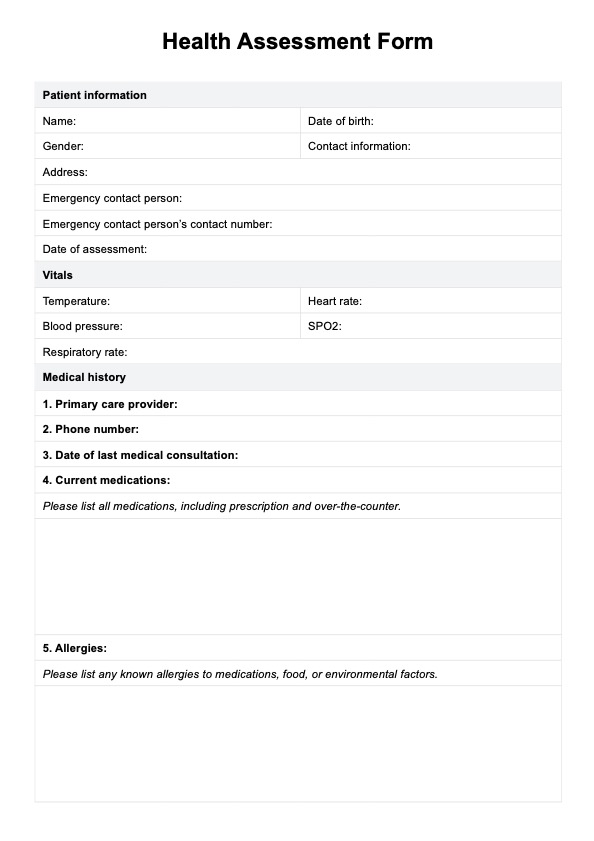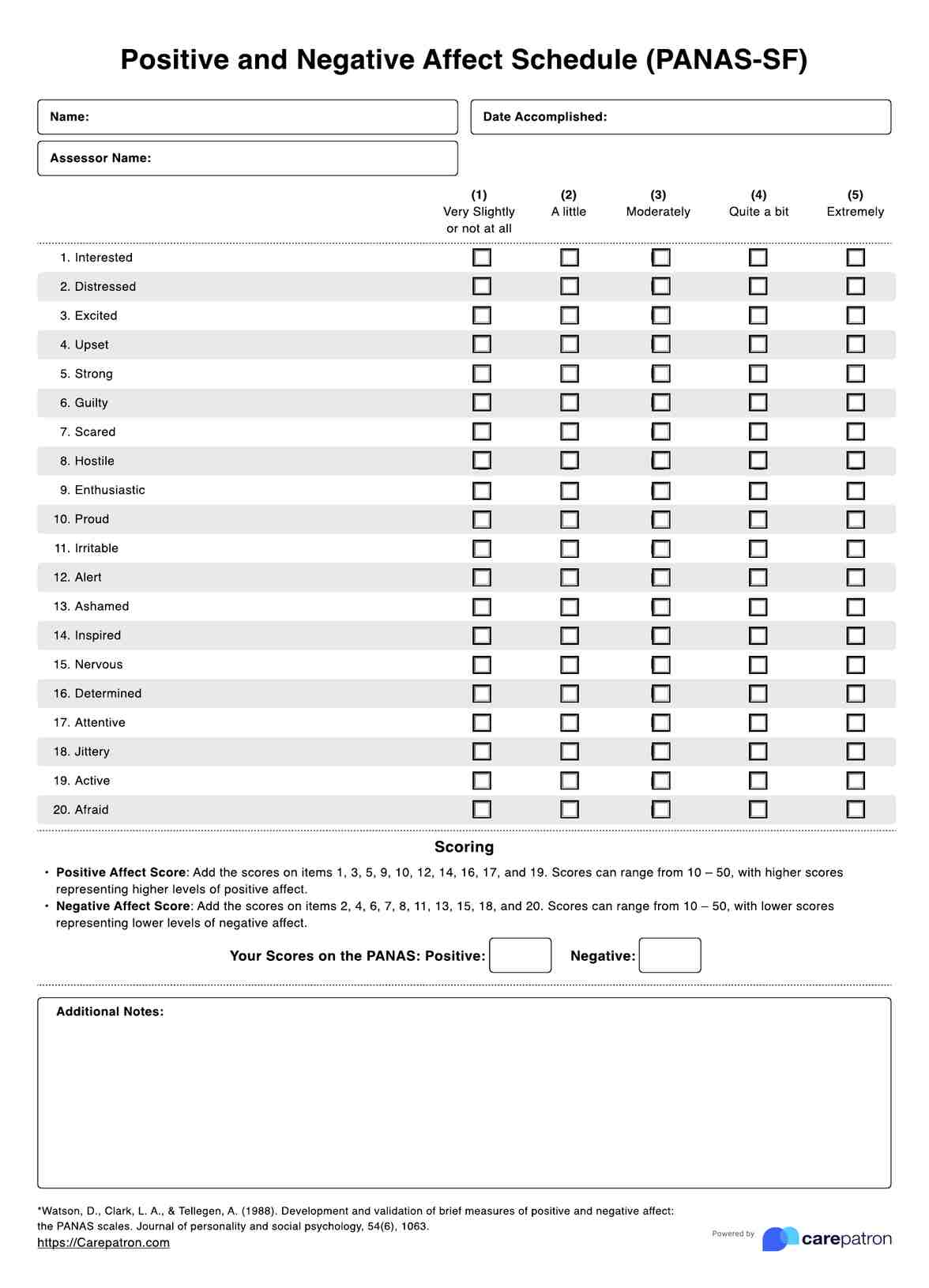Barium Swallow
Learn about the Barium Swallow Test's uses, procedure, and results. Get insights into this diagnostic tool for upper GI tract conditions.


What is a Barium Swallow Test?
A Barium Swallow Test, also known as an esophagram or upper GI series, is a medical imaging procedure used to diagnose and evaluate conditions affecting the upper gastrointestinal (GI) tract, particularly the esophagus, stomach, and small intestine. It involves using a contrast agent called barium sulfate, a chalky, radiopaque substance that can be visualized on X-ray images.
Before the procedure, patients are usually asked to fast for a certain period, typically overnight, to ensure that the stomach and upper GI tract are empty. This improves the clarity of the images.
The patient is positioned in front of an X-ray machine, often standing or sitting. Then, a radiologic technologist or healthcare provider administers a liquid suspension of barium sulfate for the patient to swallow. Barium coats the lining of the esophagus, stomach, and small intestine, making them visible on X-ray.
X-ray images are taken in various positions as the patient swallows the barium. This allows the healthcare provider to observe the movement of the barium through the upper GI tract in real time. The images show the esophagus's shape, size, function, and any abnormalities, such as strictures, ulcers, tumors, or hiatal hernias.
In some cases, real-time fluoroscopy, which is continuous X-ray imaging, captures dynamic movements of the barium as it travels down the GI tract. This helps in diagnosing conditions like reflux or motility disorders.
After the procedure, the patient may be asked to remain still briefly while additional X-rays are taken to assess the stomach and small intestine.
The Barium Swallow Test is a safe and valuable diagnostic tool for identifying various upper GI tract issues. It helps determine appropriate treatment plans and interventions for patients. However, there are some risks associated with radiation exposure.
Barium Swallow Template
Barium Swallow Example
How does it work?
The Barium Swallow Test is a diagnostic procedure that utilizes a contrast agent called barium sulfate to visualize and assess the upper gastrointestinal (GI) tract. Here's an overview of how it works:
Preparation
Patients are instructed to fast, usually overnight, to ensure an empty upper GI tract, enhancing the clarity of X-ray images.
Contrast Agent Administration
A liquid solution containing barium sulfate is administered orally to the patient. This chalky substance adheres to the inner lining of the esophagus, stomach, and small intestine.
X-ray Imaging
X-ray equipment is used to capture images as the patient swallows the barium. These images allow healthcare providers to observe the upper GI tract's shape, size, and function. The barium's presence makes the usually transparent tissues visible on the X-rays.
Fluoroscopy (Optional)
In some cases, continuous X-ray imaging called fluoroscopy is employed to monitor the dynamic movement of barium in real time. This is particularly useful for diagnosing conditions like reflux or motility disorders.
Post-Procedure Assessment
After the procedure, additional X-ray images may be taken to evaluate the condition of the stomach and small intestine.
Diagnostic Analysis
Healthcare providers analyze the X-ray images to identify and diagnose various GI conditions, including gastroesophageal reflux disease (GERD), esophageal abnormalities, swallowing difficulties (dysphagia), hiatal hernias, and structural issues.
Treatment Planning
Based on the diagnostic findings, healthcare providers develop appropriate treatment plans and interventions to address the identified GI problems.
For a printable Barium Swallow Test form, ask your healthcare provider or the medical facility where the test is scheduled. Fill it out accurately and provide any necessary medical history. The form includes patient info, procedure consent, and medical conditions or allergies. Consult with your healthcare provider for specific instructions.
When would you use this test?
The Barium Swallow Test is employed in various clinical scenarios when healthcare practitioners must investigate and diagnose conditions affecting the upper gastrointestinal (GI) tract. Here are key instances when this test is particularly appropriate:
- Persistent Gastroesophageal Reflux (GERD): When patients experience chronic heartburn, regurgitation, and other GERD symptoms that do not respond to standard treatments, healthcare providers may recommend a Barium Swallow Test to assess the extent of esophageal damage and identify potential underlying issues.
- Dysphagia Evaluation: When individuals report persistent difficulty in swallowing, especially when accompanied by pain or discomfort, healthcare practitioners use this test to identify structural abnormalities, obstructions, or motility disorders in the esophagus.
- Preoperative Assessments: Before specific surgical procedures, such as anti-reflux surgery or esophageal surgery, surgeons may request a Barium Swallow Test to assess the condition of the upper GI tract and plan the surgical approach accordingly.
- Chronic Swallowing Issues in Pediatrics: In pediatric medicine, this test is applied to evaluate children with recurrent vomiting, feeding difficulties, or suspected congenital anomalies of the esophagus, helping to diagnose and manage pediatric GI conditions.
- Emergency Situations: In emergency medicine, this test is utilized when patients present with acute swallowing difficulties or suspicion of foreign body ingestion, allowing for rapid assessment of the situation.
- Chronic Throat and Voice Issues: Otolaryngologists may recommend this test for patients with chronic throat and voice complaints when esophageal involvement is suspected of contributing.
- Refractory Symptoms: In cases where patients experience upper GI symptoms despite initial treatments or medications, a Barium Swallow Test can offer insights into the underlying cause.
What do the results mean?
The results of a Barium Swallow Test provide valuable insights into the condition of the upper gastrointestinal (GI) tract. Here are common findings and their interpretations:
- Normal Results: A normal Barium Swallow Test indicates no structural abnormalities or functional issues in the esophagus, stomach, or small intestine. This is a reassuring outcome, especially when patients have been experiencing symptoms like heartburn or swallowing difficulties.
- Gastroesophageal Reflux Disease (GERD): Abnormal findings suggest GERD may include barium reflux into the esophagus or barium aspiration into the lungs during the test. This can confirm the presence of acid reflux, which may necessitate further evaluation and management.
- Hiatal Hernia: A Barium Swallow Test can reveal the presence of a hiatal hernia, which is indicated by a portion of the stomach protruding through the diaphragm into the chest cavity. This finding helps diagnose hiatal hernias, which may require treatment if symptomatic.
- Esophageal Strictures: Narrowing or constrictions in the esophagus may be observed on the X-ray images. These strictures can be due to inflammation, scarring, or other underlying conditions and may contribute to dysphagia (difficulty swallowing).
- Motility Disorders: In cases where the esophagus fails to propel the barium effectively, motility disorders may be suspected. Achalasia, for example, can lead to impaired esophageal peristalsis and a characteristic "bird's beak" appearance on X-rays.
- Structural Abnormalities: The test may reveal structural abnormalities such as diverticula (pouches), tumors, or varices. These findings require further evaluation and may necessitate additional diagnostic procedures or treatment.
- Aspiration: If barium is observed entering the airway during the test, it suggests a risk of aspiration, where substances enter the lungs instead of the stomach. Aspiration can lead to respiratory issues and may require intervention.
Research & Evidence
The Barium Swallow Test, also known as an upper gastrointestinal (GI) series or esophagram, is rooted in the early development of medical imaging techniques. It was first introduced in the early 20th century and has since evolved as an essential diagnostic tool in gastroenterology and related medical fields.
The use of barium in medical imaging dates back to the early 1900s when physicians began exploring its potential to enhance X-ray visibility of the GI tract. Barium sulfate, a chemically inert compound, emerged as the ideal contrast agent due to its ability to coat the GI tract's lining and produce clear X-ray images. Over the years, advances in radiology technology and techniques have refined the Barium Swallow Test, making it a safer and more accurate diagnostic procedure.
The Barium Swallow Test has been extensively researched and validated through clinical studies and medical literature. Numerous studies have demonstrated its efficacy in diagnosing various upper GI conditions, including gastroesophageal reflux disease (GERD), hiatal hernias, esophageal strictures, and motility disorders. It is valuable for assessing anatomical and functional aspects of the esophagus and surrounding structures.
One key advantage of the Barium Swallow Test is its real-time imaging capability, which allows healthcare providers to observe the dynamic movement of barium as it flows through the GI tract. This has led to improved diagnosis and understanding of conditions related to swallowing difficulties, reflux, and structural abnormalities.
The test's long history and well-documented research support its continued use as a fundamental diagnostic tool. However, like all medical procedures, healthcare providers need to consider each patient's unique clinical presentation and medical history when determining the appropriateness of the Barium Swallow Test. Moreover, ongoing research continues to refine and expand its applications, ensuring its relevance in modern healthcare.
References
- Chen, A. (2023, July 24). Barium Swallow. StatPearls - NCBI Bookshelf. https://www.ncbi.nlm.nih.gov/books/NBK493176/
- Cirino, E. (2017, April 22). What to Expect from a Barium Swallow. Healthline. https://www.healthline.com/health/barium-swallow
- Department of Health & Human Services. (n.d.). Barium tests. Better Health Channel. https://www.betterhealth.vic.gov.au/health/conditionsandtreatments/barium-tests
- Murphy, A., & Jones, J. (2009). Barium swallow. Radiopaedia.org. https://doi.org/10.53347/rid-6471
- Railton, D. (2017, April 27). What to expect during a barium swallow. https://www.medicalnewstoday.com/articles/317189
Commonly asked questions
Gastroenterologists, otolaryngologists, surgeons, and primary care physicians typically request Barium Swallow Tests based on patient symptoms and medical history.
Barium Swallow Tests investigate conditions like GERD, dysphagia, hiatal hernias, esophageal strictures, and more, helping diagnose upper GI tract issues.
Patients ingest a barium sulfate solution, which coats the upper GI tract. X-ray imaging captures real-time images to visualize and diagnose GI conditions.


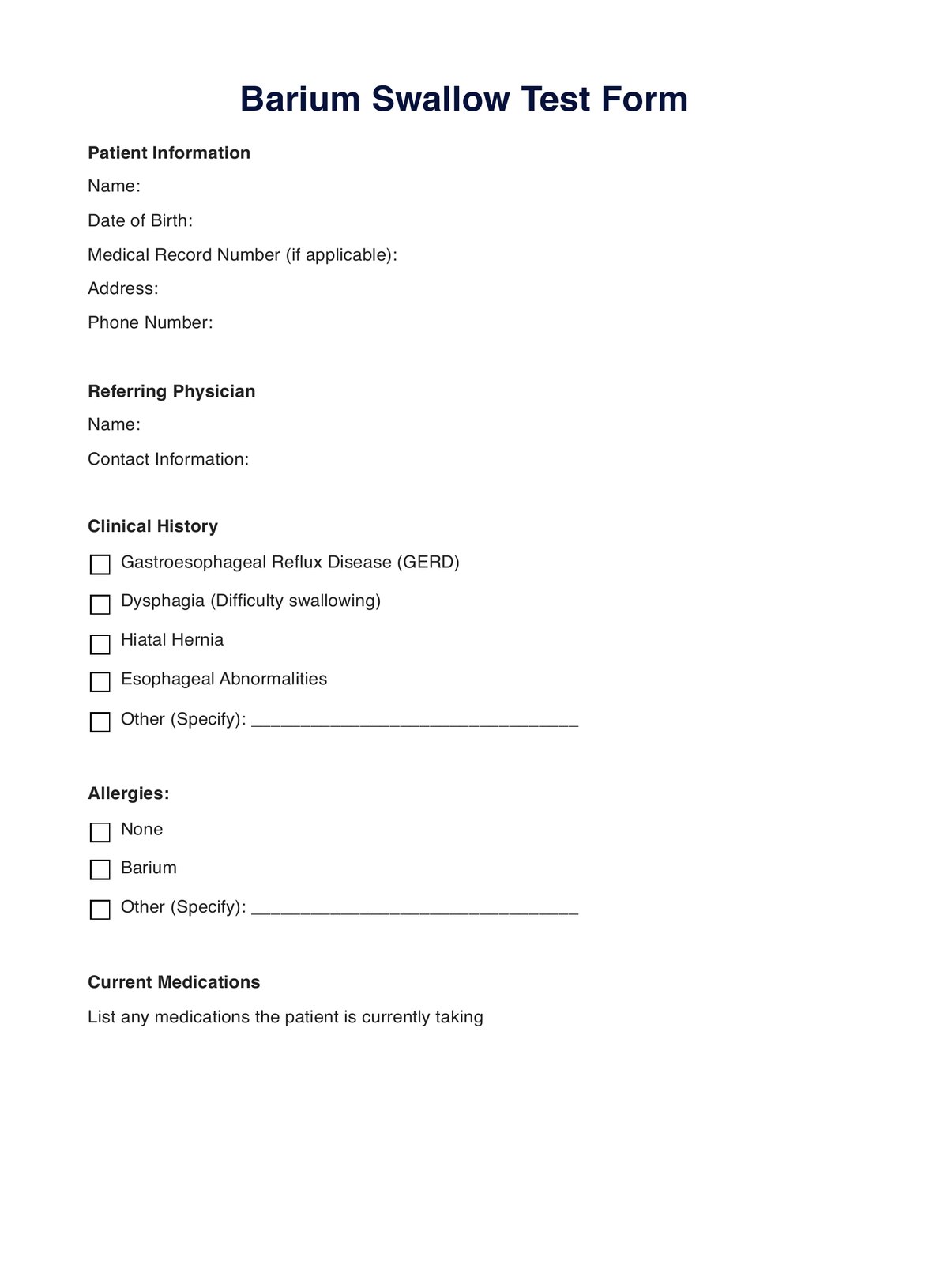
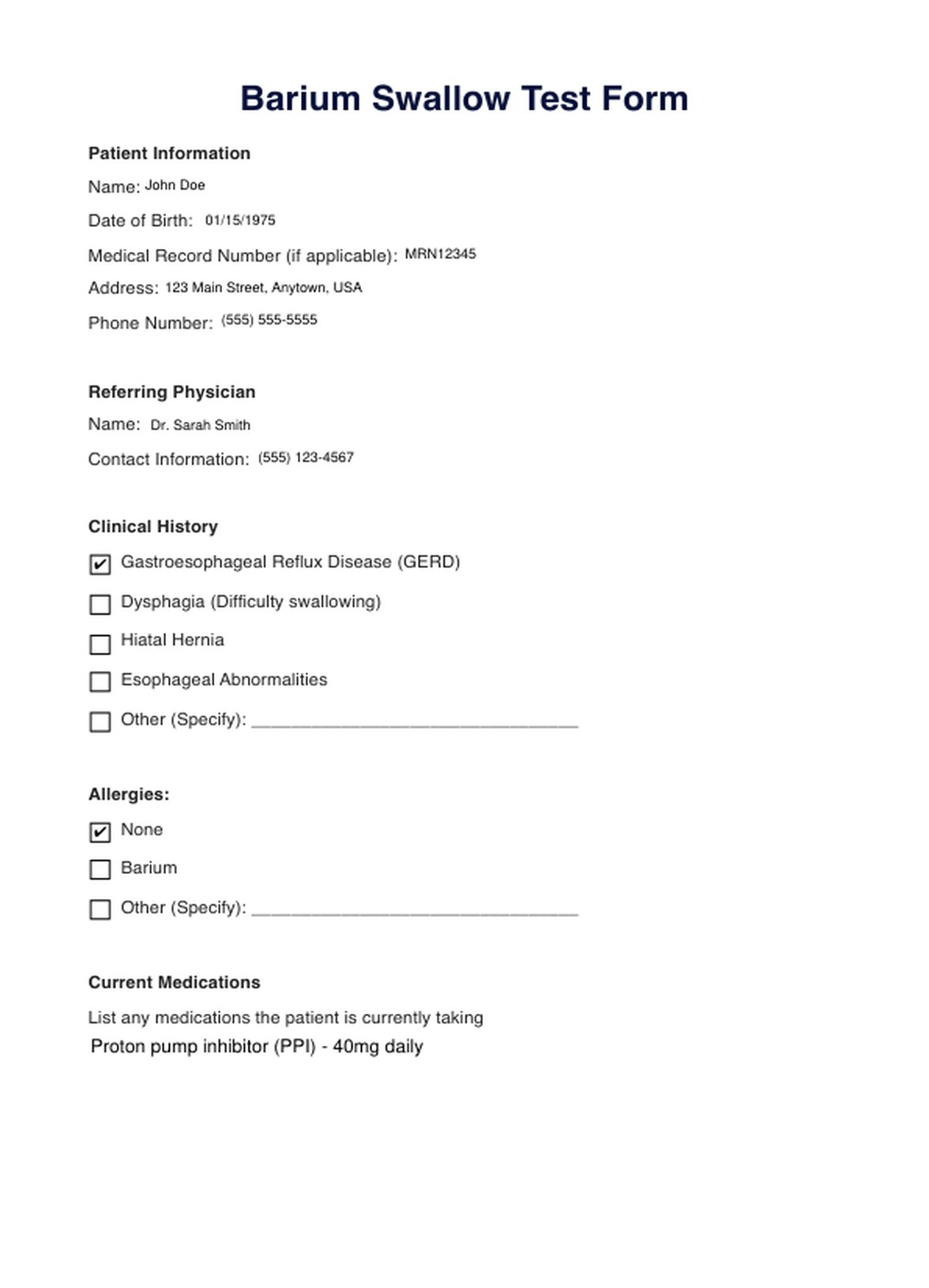













-template.jpg)











